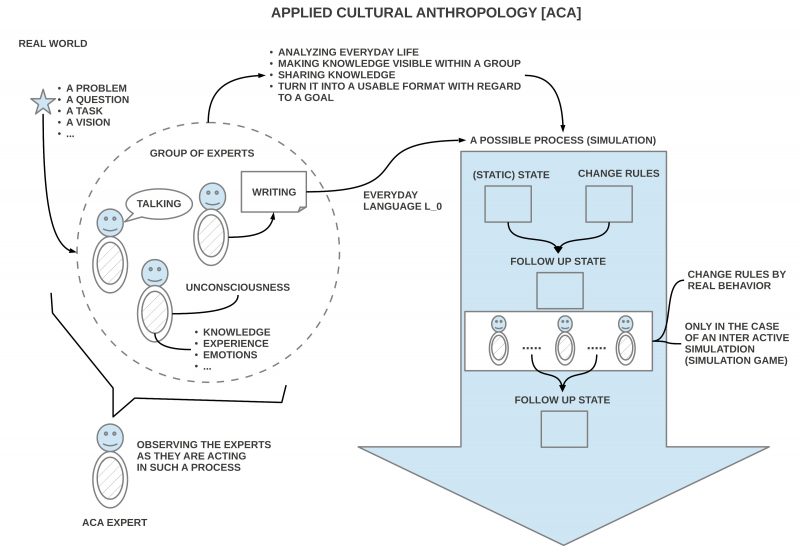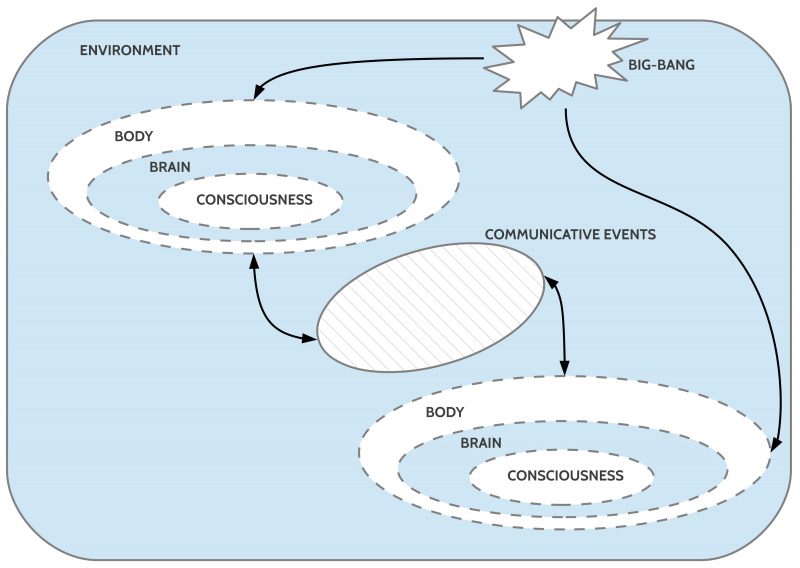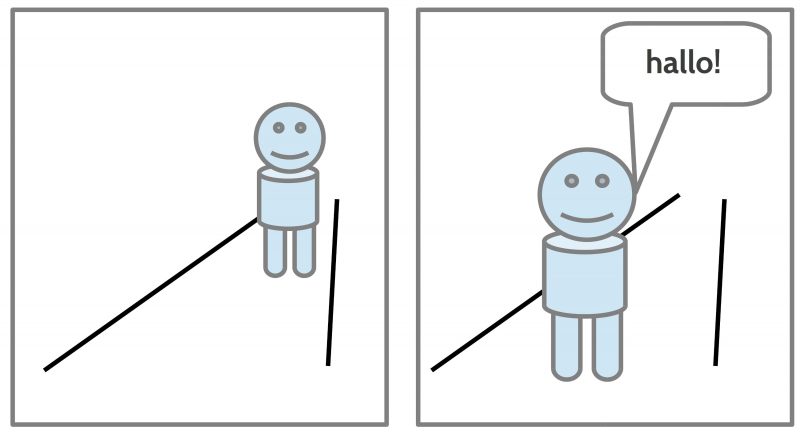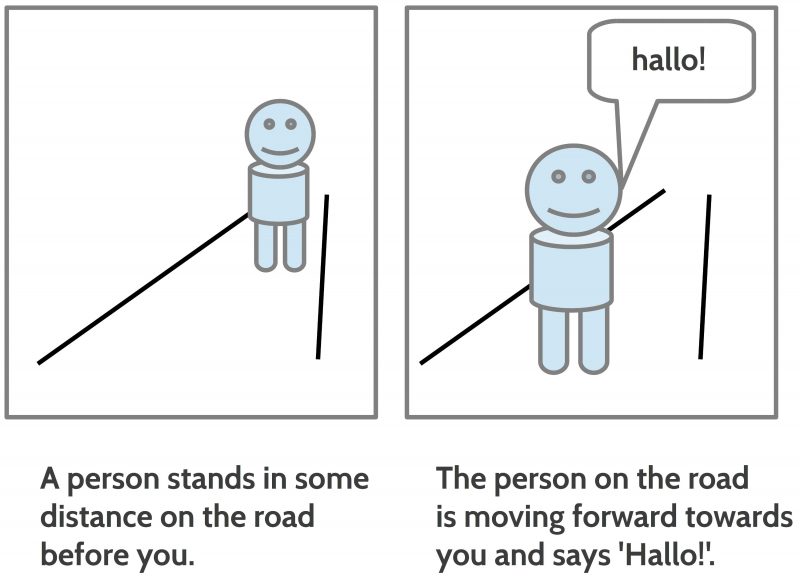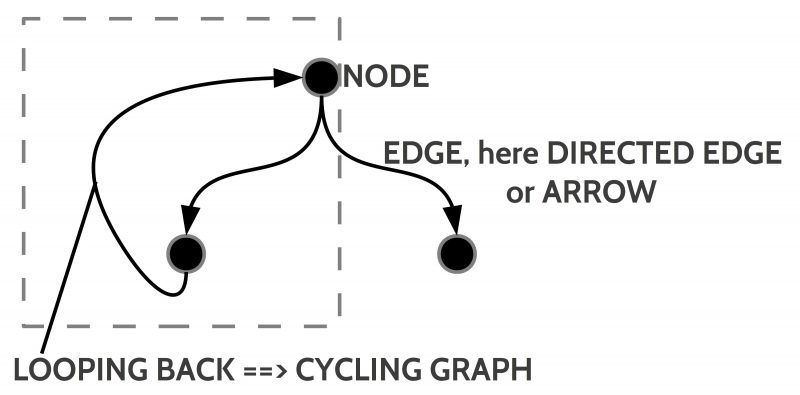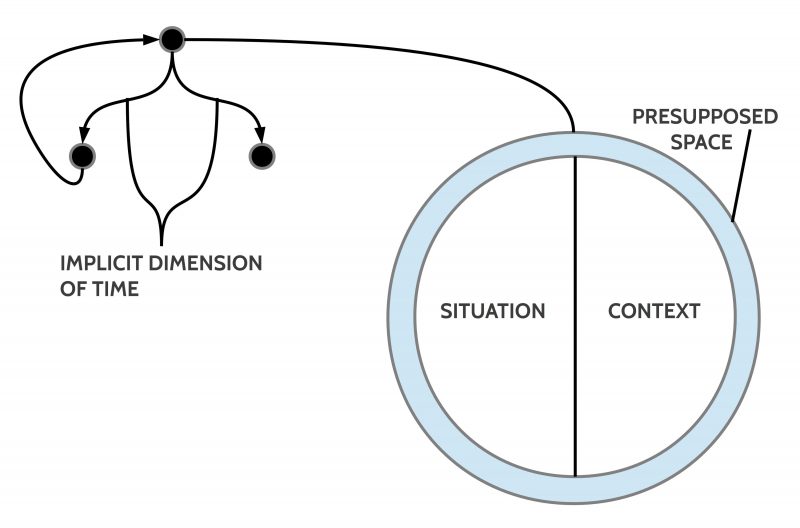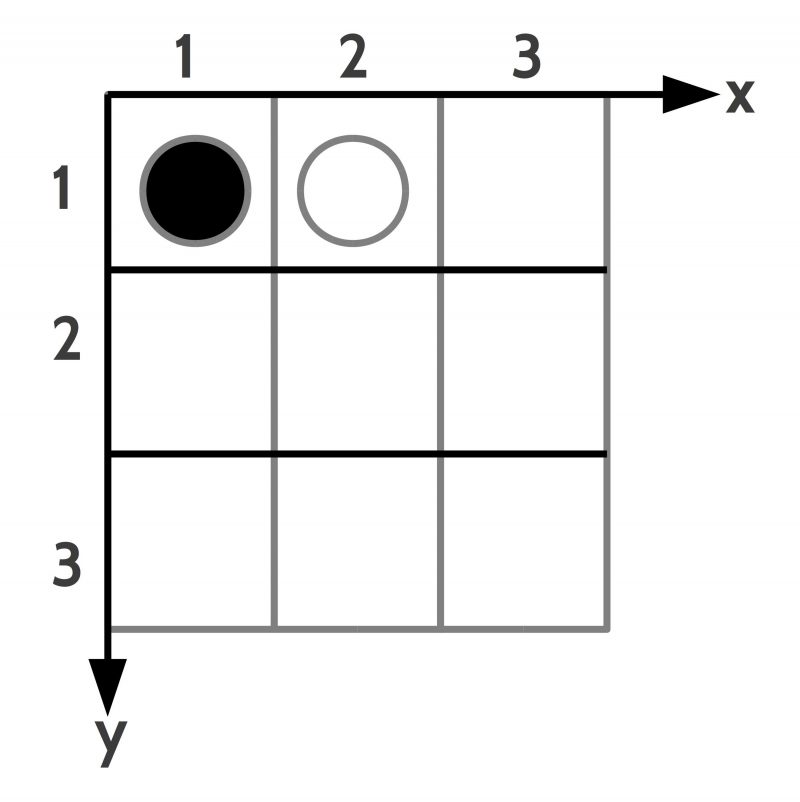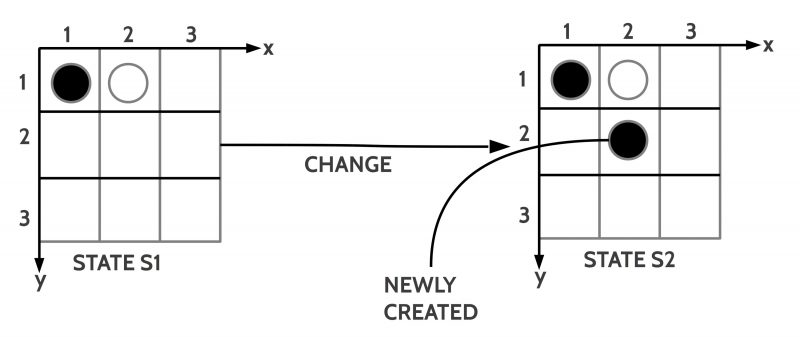eJournal: uffmm.org
ISSN 2567-6458, 31.March – 31.March 2021
Email: info@uffmm.org
Author: Gerd Doeben-Henisch
Email: gerd@doeben-henisch.de
CONTEXT
This text is part of a philosophy of science analysis of the case of the oksimo software (oksimo.com). A specification of the oksimo software from an engineering point of view can be found in four consecutive posts dedicated to the HMI-Analysis for this software.
POPPERs POSITION IN THE CHAPTERS 1-17
In my reading of the chapters 1-17 of Popper’s The Logic of Scientific Discovery [1] I see the following three main concepts which are interrelated: (i) the concept of a scientific theory, (ii) the point of view of a meta-theory about scientific theories, and (iii) possible empirical interpretations of scientific theories.
Scientific Theory
A scientific theory is according to Popper a collection of universal statements AX, accompanied by a concept of logical inference ⊢, which allows the deduction of a certain theorem t if one makes some additional concrete assumptions H.
Example: Theory T1 = <AX1,⊢>
AX1= {Birds can fly}
H1= {Peter is a bird}
⊢: Peter can fly
Because there exists a concrete object which is classified as a bird and this concrete bird with the name ‘Peter’ can fly one can infer that the universal statement could be verified by this concrete bird. But the question remains open whether all observable concrete objects classifiable as birds can fly.
One could continue with observations of several hundreds of concrete birds but according to Popper this would not prove the theory T1 completely true. Such a procedure can only support a numerical universality understood as a conjunction of finitely many observations about concrete birds like ‘Peter can fly’ & ‘Mary can fly’ & …. &’AH2 can fly’.(cf. p.62)
The only procedure which is applicable to a universal theory according to Popper is to falsify a theory by only one observation like ‘Doxy is a bird’ and ‘Doxy cannot fly’. Then one could construct the following inference:
AX1= {Birds can fly}
H2= {Doxy is a bird, Doxy cannot fly}
⊢: ‘Doxy can fly’ & ~’Doxy can fly’
If a statement A can be inferred and simultaneously the negation ~A then this is called a logical contradiction:
{AX1, H2} ⊢‘Doxy can fly’ & ~’Doxy can fly’
In this case the set {AX1, H2} is called inconsistent.
If a set of statements is classified as inconsistent then you can derive from this set everything. In this case you cannot any more distinguish between true or false statements.
Thus while the increase of the number of confirmed observations can only increase the trust in the axioms of a scientific theory T without enabling an absolute proof a falsification of a theory T can destroy the ability of this theory to distinguish between true and false statements.
Another idea associated with this structure of a scientific theory is that the universal statements using universal concepts are strictly speaking speculative ideas which deserve some faith that these concepts will be provable every time one will try it.(cf. p.33, 63)
Meta Theory, Logic of Scientific Discovery, Philosophy of Science
Talking about scientific theories has at least two aspects: scientific theories as objects and those who talk about these objects.
Those who talk about are usually Philosophers of Science which are only a special kind of Philosophers, e.g. a person like Popper.
Reading the text of Popper one can identify the following elements which seem to be important to describe scientific theories in a more broader framework:
A scientific theory from a point of view of Philosophy of Science represents a structure like the following one (minimal version):
MT=<S, A[μ], E, L, AX, ⊢, ET, E+, E-, true, false, contradiction, inconsistent>
In a shared empirical situation S there are some human actors A as experts producing expressions E of some language L. Based on their built-in adaptive meaning function μ the human actors A can relate properties of the situation S with expressions E of L. Those expressions E which are considered to be observable and classified to be true are called true expressions E+, others are called false expressions E-. Both sets of expressions are true subsets of E: E+ ⊂ E and E- ⊂ E. Additionally the experts can define some special set of expressions called axioms AX which are universal statements which allow the logical derivation of expressions called theorems of the theory T ET which are called logically true. If one combines the set of axioms AX with some set of empirically true expressions E+ as {AX, E+} then one can logically derive either only expressions which are logically true and as well empirically true, or one can derive logically true expressions which are empirically true and empirically false at the same time, see the example from the paragraph before:
{AX1, H2} ⊢‘Doxy can fly’ & ~’Doxy can fly’
Such a case of a logically derived contradiction A and ~A tells about the set of axioms AX unified with the empirical true expressions that this unified set confronted with the known true empirical expressions is becoming inconsistent: the axioms AX unified with true empirical expressions can not distinguish between true and false expressions.
Popper gives some general requirements for the axioms of a theory (cf. p.71):
- Axioms must be free from contradiction.
- The axioms must be independent , i.e . they must not contain any axiom deducible from the remaining axioms.
- The axioms should be sufficient for the deduction of all statements belonging to the theory which is to be axiomatized.
While the requirements (1) and (2) are purely logical and can be proved directly is the requirement (3) different: to know whether the theory covers all statements which are intended by the experts as the subject area is presupposing that all aspects of an empirical environment are already know. In the case of true empirical theories this seems not to be plausible. Rather we have to assume an open process which generates some hypothetical universal expressions which ideally will not be falsified but if so, then the theory has to be adapted to the new insights.
Empirical Interpretation(s)
Popper assumes that the universal statements of scientific theories are linguistic representations, and this means they are systems of signs or symbols. (cf. p.60) Expressions as such have no meaning. Meaning comes into play only if the human actors are using their built-in meaning function and set up a coordinated meaning function which allows all participating experts to map properties of the empirical situation S into the used expressions as E+ (expressions classified as being actually true), or E- (expressions classified as being actually false) or AX (expressions having an abstract meaning space which can become true or false depending from the activated meaning function).
Examples:
- Two human actors in a situation S agree about the fact, that there is ‘something’ which they classify as a ‘bird’. Thus someone could say ‘There is something which is a bird’ or ‘There is some bird’ or ‘There is a bird’. If there are two somethings which are ‘understood’ as being a bird then they could say ‘There are two birds’ or ‘There is a blue bird’ (If the one has the color ‘blue’) and ‘There is a red bird’ or ‘There are two birds. The one is blue and the other is red’. This shows that human actors can relate their ‘concrete perceptions’ with more abstract concepts and can map these concepts into expressions. According to Popper in this way ‘bottom-up’ only numerical universal concepts can be constructed. But logically there are only two cases: concrete (one) or abstract (more than one). To say that there is a ‘something’ or to say there is a ‘bird’ establishes a general concept which is independent from the number of its possible instances.
- These concrete somethings each classified as a ‘bird’ can ‘move’ from one position to another by ‘walking’ or by ‘flying’. While ‘walking’ they are changing the position connected to the ‘ground’ while during ‘flying’ they ‘go up in the air’. If a human actor throws a stone up in the air the stone will come back to the ground. A bird which is going up in the air can stay there and move around in the air for a long while. Thus ‘flying’ is different to ‘throwing something’ up in the air.
- The expression ‘A bird can fly’ understood as an expression which can be connected to the daily experience of bird-objects moving around in the air can be empirically interpreted, but only if there exists such a mapping called meaning function. Without a meaning function the expression ‘A bird can fly’ has no meaning as such.
- To use other expressions like ‘X can fly’ or ‘A bird can Y’ or ‘Y(X)’ they have the same fate: without a meaning function they have no meaning, but associated with a meaning function they can be interpreted. For instance saying the the form of the expression ‘Y(X)’ shall be interpreted as ‘Predicate(Object)’ and that a possible ‘instance’ for a predicate could be ‘Can Fly’ and for an object ‘a bird’ then we could get ‘Can Fly(a Bird)’ translated as ‘The object ‘a Bird’ has the property ‘can fly” or shortly ‘A Bird can fly’. This usually would be used as a possible candidate for the daily meaning function which relates this expression to those somethings which can move up in the air.
Axioms and Empirical Interpretations
The basic idea with a system of axioms AX is — according to Popper — that the axioms as universal expressions represent a system of equations where the general terms should be able to be substituted by certain values. The set of admissible values is different from the set of inadmissible values. The relation between those values which can be substituted for the terms is called satisfaction: the values satisfy the terms with regard to the relations! And Popper introduces the term ‘model‘ for that set of admissible terms which can satisfy the equations.(cf. p.72f)
But Popper has difficulties with an axiomatic system interpreted as a system of equations since it cannot be refuted by the falsification of its consequences ; for these too must be analytic.(cf. p.73) His main problem with axioms is, that “the concepts which are to be used in the axiomatic system should be universal names, which cannot be defined by empirical indications, pointing, etc . They can be defined if at all only explicitly, with the help of other universal names; otherwise they can only be left undefined. That some universal names should remain undefined is therefore quite unavoidable; and herein lies the difficulty…” (p.74)
On the other hand Popper knows that “…it is usually possible for the primitive concepts of an axiomatic system such as geometry to be correlated with, or interpreted by, the concepts of another system , e.g . physics …. In such cases it may be possible to define the fundamental concepts of the new system with the help of concepts which were originally used in some of the old systems .”(p.75)
But the translation of the expressions of one system (geometry) in the expressions of another system (physics) does not necessarily solve his problem of the non-empirical character of universal terms. Especially physics is using also universal or abstract terms which as such have no meaning. To verify or falsify physical theories one has to show how the abstract terms of physics can be related to observable matters which can be decided to be true or not.
Thus the argument goes back to the primary problem of Popper that universal names cannot not be directly be interpreted in an empirically decidable way.
As the preceding examples (1) – (4) do show for human actors it is no principal problem to relate any kind of abstract expressions to some concrete real matters. The solution to the problem is given by the fact that expressions E of some language L never will be used in isolation! The usage of expressions is always connected to human actors using expressions as part of a language L which consists together with the set of possible expressions E also with the built-in meaning function μ which can map expressions into internal structures IS which are related to perceptions of the surrounding empirical situation S. Although these internal structures are processed internally in highly complex manners and are — as we know today — no 1-to-1 mappings of the surrounding empirical situation S, they are related to S and therefore every kind of expressions — even those with so-called abstract or universal concepts — can be mapped into something real if the human actors agree about such mappings!
Example:
Lets us have a look to another example.
If we take the system of axioms AX as the following schema: AX= {a+b=c}. This schema as such has no clear meaning. But if the experts interpret it as an operation ‘+’ with some arguments as part of a math theory then one can construct a simple (partial) model m as follows: m={<1,2,3>, <2,3,5>}. The values are again given as a set of symbols which as such must not ave a meaning but in common usage they will be interpreted as sets of numbers which can satisfy the general concept of the equation. In this secondary interpretation m is becoming a logically true (partial) model for the axiom Ax, whose empirical meaning is still unclear.
It is conceivable that one is using this formalism to describe empirical facts like the description of a group of humans collecting some objects. Different people are bringing objects; the individual contributions will be reported on a sheet of paper and at the same time they put their objects in some box. Sometimes someone is looking to the box and he will count the objects of the box. If it has been noted that A brought 1 egg and B brought 2 eggs then there should according to the theory be 3 eggs in the box. But perhaps only 2 could be found. Then there would be a difference between the logically derived forecast of the theory 1+2 = 3 and the empirically measured value 1+2 = 2. If one would define all examples of measurement a+b=c’ as contradiction in that case where we assume a+b=c as theoretically given and c’ ≠ c, then we would have with ‘1+2 = 3′ & ~’1+2 = 3’ a logically derived contradiction which leads to the inconsistency of the assumed system. But in reality the usual reaction of the counting person would not be to declare the system inconsistent but rather to suggest that some unknown actor has taken against the agreed rules one egg from the box. To prove his suggestion he had to find this unknown actor and to show that he has taken the egg … perhaps not a simple task … But what will the next authority do: will the authority belief the suggestion of the counting person or will the authority blame the counter that eventually he himself has taken the missing egg? But would this make sense? Why should the counter write the notes how many eggs have been delivered to make a difference visible? …
Thus to interpret some abstract expression with regard to some observable reality is not a principal problem, but it can eventually be unsolvable by purely practical reasons, leaving questions of empirical soundness open.
SOURCES
[1] Karl Popper, The Logic of Scientific Discovery, First published 1935 in German as Logik der Forschung, then 1959 in English by Basic Books, New York (more editions have been published later; I am using the eBook version of Routledge (2002))


